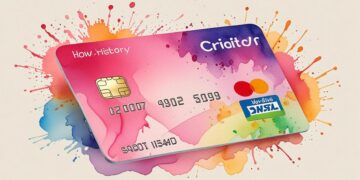Credit Card and Security: How to Protect Your Financial Information in Online Transactions

The Balance between Convenience and Security
In an era where convenience is paramount, online shopping has transformed the way we purchase goods and services. The ability to acquire anything from groceries to electronics with just a few clicks is undeniably appealing. Yet, this convenience often comes hand-in-hand with a heightened sense of vulnerability. As shoppers, we must recognize that every online transaction carries inherent risks, and understanding these risks is the first step toward safeguarding our financial wellbeing.
The Nature of Risks in Online Transactions
Online transactions expose us to several potential hazards that are important to acknowledge:
- Fraudulent Activities: Cybercriminals are continually devising new strategies to infiltrate online payment systems. For instance, phishing scams often lead unsuspecting shoppers to imitate websites that seem legitimate, tricking them into providing personal and financial information.
- User Error: Simple oversights, such as conducting transactions over public Wi-Fi networks, can significantly compromise your sensitive information. In Canada, many people frequent coffee shops or public libraries, where the absence of secure connections could leave personal details vulnerable to interception.
- Data Breaches: Even renowned online retailers and payment processors have fallen prey to hackers. When these breaches occur, millions of users potentially have their information compromised, creating a ripple effect that impacts countless individuals. For example, in 2020, a major Canadian online retailer faced a data breach that exposed the personal information of thousands of customers.
Steps to Protect Your Financial Information
Despite these risks, you wield significant power to protect yourself and your finances. By implementing proactive measures, you can shop online with confidence:
- Use Strong Passwords: Craft complex and unique passwords for each of your accounts. For instance, a mix of letters, numbers, and symbols not only fortifies your accounts but also makes it harder for hackers to gain access.
- Enable Two-Factor Authentication: This adds an essential layer of security by requiring another verification step beyond your password. Whether it’s a text message or an authentication app, this extra effort goes a long way in protecting your accounts.
- Monitor Your Accounts: Regular scrutiny of your bank statements and transaction histories helps you identify unauthorized transactions swiftly. If you notice something unexpected, reporting it immediately can help mitigate further risks.
Building a culture of financial responsibility and awareness is essential in today’s digital marketplace. By embracing these strategies, you can transform your online shopping experiences into secure and enjoyable endeavors. Ultimately, taking personal responsibility for your financial security empowers not only you but also contributes to a safe online environment for all users. As a proud Canadian navigating online retail, know that your steps toward security also protect your fellow shoppers in our vast and interconnected marketplace.
DIVE DEEPER: Click here to learn more
Understanding the Risks and Taking Control
As we embrace the convenience of online shopping, it is crucial to understand the multifaceted risks that accompany our transactions. The digital landscape is rife with potential threats, and acknowledging them can empower us to take action. By being proactive, we can not only protect ourselves but also foster a safer online community.
The Reality of Online Threats
The risks linked to online transactions can appear daunting, yet they serve as a clarion call for vigilance. Here are some prevalent threats that every shopper should be aware of:
- Phishing Scams: These malicious attempts often masquerade as legitimate communications from banks or retailers. Be wary of emails or messages that prompt you to click on suspicious links or provide personal information. Remember, reputable companies will never request sensitive data via unsecured channels.
- Public Wi-Fi Vulnerability: The convenience of public Wi-Fi can be particularly tempting, but using it for financial transactions is akin to leaving your front door wide open. With easily accessible tools, cybercriminals can intercept information on unsecured networks. Always opt for secured, private connections when accessing your accounts.
- Identity Theft: With the wealth of personal data available online, identity theft remains a critical concern. All it takes is a single piece of overlooked information for fraudsters to impersonate you, potentially opening credit accounts in your name or making significant purchases. Vigilance is your best defense.
Empowering Yourself Through Awareness
As daunting as these threats may sound, they also spark an opportunity for personal empowerment. By educating yourself about these risks and the measures to counter them, you can make informed choices that safeguard your financial information. Here are actionable strategies to reinforce your online security:
- Keep Software Updated: Regularly update your devices and applications, as these updates often come with crucial security patches that address vulnerabilities. Ensuring that your operating system, web browser, and antivirus software are up to date is a simple yet effective way to strengthen your defenses.
- Use Secure Payment Methods: Whenever possible, choose wallets or payment services that offer extra layers of security, such as encryption and fraud monitoring. Many Canadian consumers find that virtual credit cards and e-wallets add a layer of anonymity to their transactions, thereby reducing the chances of their information being intercepted.
- Educate Yourself on Scams: Familiarize yourself with the common signs of scams. Recognizing red flags, such as unsolicited communications or overly aggressive sales tactics, can help you avoid being lured into a trap. The more you know, the better equipped you become to navigate threats.
By integrating these practices into your online shopping habits, you can feel empowered to embrace the digital marketplace with confidence. As you navigate the web of e-commerce, remember that security starts with you. Every step taken toward vigilance not only protects your finances but also contributes to a culture of safety for everyone shopping online. Share your knowledge and experiences with friends and family, fostering a community that values responsible financial practices in our interconnected Canadian economy.
DISCOVER MORE: Click here to learn how to navigate financial reports
Strengthening Your Online Transactions
As Canadians navigate the rich and diverse world of online shopping, it becomes essential to embrace strategies that not only enhance our security but also allow us to shop with confidence. Adopting smarter, more secure practices can significantly reduce the chances of fraud and help protect your well-deserved financial information.
The Power of Two-Factor Authentication
One of the most effective ways to fortify your online accounts is through two-factor authentication (2FA). This added layer of security requires not just your password, but also a second form of verification before access is granted. Typically, this can be a code sent to your smartphone or an authentication app. This measure dramatically reduces the risk of unauthorized access, even if your password is compromised. Encourage friends and family members to enable 2FA on their banking apps and accounts, fostering a collective defense against potential threats.
Monitoring Your Financial Transactions
Regularly reviewing your bank and credit card statements can be a game-changer in identifying unauthorized transactions early. By scrutinizing your statements for any suspicious activity, you can act swiftly, potentially limiting damages. Most Canadian banks also offer mobile apps that provide real-time alerts for transactions, empowering you to track your spending and detect any anomalies immediately. Taking these proactive steps not only safeguards you from fraud but can also enhance your financial awareness.
The Importance of Strong Passwords
In today’s digital landscape, a strong password is your first line of defense. It’s crucial to create complex passwords that are difficult to guess. A combination of uppercase letters, numbers, and special characters is advisable. Moreover, refrain from reusing the same password across multiple platforms. Implementing a reliable password manager can help you store and generate unique passwords securely, minimizing the risk of password-related threats.
Recognizing Secure Websites
Shopping online in Canada should always involve a keen eye for security indicators. When inputting sensitive information, ensure the website’s URL begins with “https” and features a padlock symbol in the address bar. These indicators signify that the website encrypts your data during transmission, offering protection against interception. As more Canadian retailers invest in advanced security protocols, it’s essential to only shop from reputable sites that prioritize customer safety.
Managing Credit Card Information Wisely
Another significant aspect of security in online transactions is managing your credit card information wisely. Consider using virtual credit cards, which offer a unique number dedicated to a specific transaction, thus shielding your actual card details. Many Canadian banks have begun to offer such options, providing an added layer of security for online purchases. Furthermore, implementing a payment service that allows you to store payment methods securely can limit the risk associated with entering your credit card information repeatedly.
Embracing these strategies empowers you not just as an individual but as part of a broader community of savvy shoppers. By prioritizing security and adhering to best practices, you can enjoy the richness of e-commerce without the looming threat of financial misuse. Encourage your peers to adopt these practices, extending your commitment to security and creating a safer online shopping environment for everyone.
LEARN MORE: Click here to discover how Canadian retailers are adapting
Conclusion
In a world where online shopping has become a part of our everyday lives, protecting your financial information should be a top priority. By adopting a multifaceted approach to security, you can empower yourself to navigate the digital marketplace with confidence and peace of mind. Two-factor authentication, strong passwords, and diligent monitoring of your transactions are essential steps that re-enforce your defenses against fraud.
As you shop online, remember to choose only secure websites and consider using preventive tools like virtual credit cards. These measures not only serve to protect your personal information but also cultivate a greater awareness of your financial habits. The journey towards financial security starts with informed decisions—each step you take contributes to a more secure shopping experience for yourself and others.
Let us foster a culture of vigilance within our communities. Share these practices with friends and family, encouraging them to implement these critical strategies. Together, we can create a safer environment not just for ourselves but for all Canadians engaging in e-commerce. Embrace your role as a conscientious consumer; your commitment to safeguarding your financial information is a vital part of the larger solution to combat online threats.
Ultimately, by prioritizing security and making informed choices, you can truly enjoy the benefits of online shopping without compromising your financial well-being. The responsibility of protecting your information lies in your hands, and with the right tools and awareness, the world of online transactions can be safe and rewarding.

Beatriz Johnson is an experienced financial analyst and writer with a passion for simplifying the complexities of business and finance. With over a decade of experience in the industry, she specializes in topics such as personal finance, investment strategies, and global economic trends. Through her work at Great Schedule, Beatriz empowers readers to make informed financial decisions and stay ahead in the ever-changing economic landscape.





